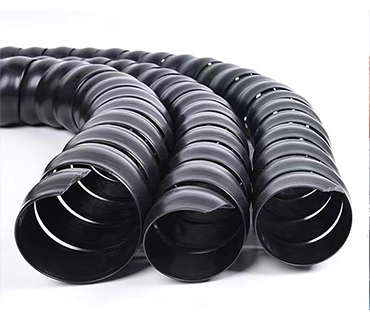Understanding Heat-resistant Sleeving
Heat-resistant sleeving is made of fiberglass and silicone. The quality standard is that the outer layer should be rust red and darker in color. The whole sleeving should have good elasticity and can be stretched to 1.3 times its width. The inner layer should be made of untreated fiberglass and appear yellow after vulcanization. Heat-resistant sleeving is a silicone rubber fiberglass sleeving made by weaving high-purity, untreated fiberglass into a tube and then coating the outer wall of the tube with organic silicone and curing it. It can be used in the temperature range between -65℃ and 260℃ for a long time while maintaining its soft and elastic properties.
The Benefits of Using Heat-resistant Sleeving in Industry
In industrial production, there are many harsh environments, especially in some high-temperature environments. If internal cables or equipment are not protected, they can easily be damaged, posing a safety hazard. Therefore, installing heat-resistant sleeving demonstrates its benefits.
The heat-resistant sleeving produced is made by combining untreated fiberglass and silicone rubber through multiple processes, with a temperature resistance of up to 1650℃, which can effectively protect cables and equipment from damage.
Heat-resistant sleeving is a high-quality and qualified high-temperature and fire-resistant protective material. It can be used at 260℃ for a long time without aging, cracking, or surface peeling; at 1000℃, it can protect cables from damage for a short time.
Heat-resistant sleeving also has various protective products with different temperature resistance levels. There are many specifications and models, and they can be customized according to actual needs. Its protective effect is excellent, and different installation methods can be applied to the protection of different equipment.
The use requirements and material selection of heat-resistant sleeving
Heat-resistant sleeving is usually used to protect various pipelines from damage in high-temperature environments. In many harsh working conditions, the use requirements and material selection of heat-resistant sleeving are also relatively strict. Heat-resistant sleeving not only needs to withstand various corrosive substances in harsh environments but also requires good insulation, wear resistance, and long service life to ensure its protective effect is safe and effective.
The use requirements of heat-resistant sleeving
During normal use, it is necessary to ensure that the heat-resistant sleeving does not have problems such as improper coverage, sleeving embrittlement, and poor protective effect. It is also necessary to ensure that high-temperature splashing materials do not damage the internal pipelines, and so on.
The material selection of heat-resistant sleeving
According to the actual needs of heat-resistant sleeving, it has various materials for production, which have functions such as high-temperature and fire resistance, corrosion resistance, and wear resistance. According to its different temperature resistance levels, it can be applied to different working conditions to protect pipelines and equipment from damage.

















